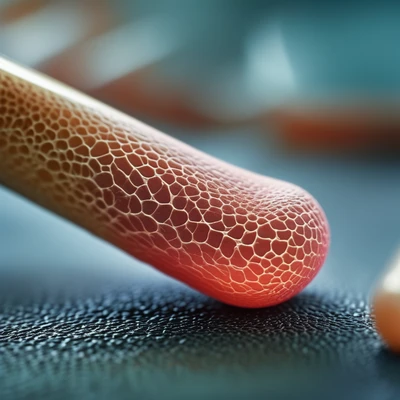A recent study has unveiled encouraging advancements in creating a non-invasive sampling technique for the early detection of Parkinson's disease—potentially up to seven years before the onset of motor symptoms—by examining the chemical composition of skin.
The research, published today in npj Parkinson's Disease, shows that compounds or "volatiles" present in sebum—the oily substance secreted by our skin—carry critical biomarkers for identifying Parkinson's during its earliest phases.
npj Parkinson's DiseaseEmploying a method called Thermal Desorption-Gas Chromatography-Mass Spectrometry (TD-GC-MS), scientists from The University of Manchester, collaborating with Salford Royal NHS Trust and the University of Innsbruck, analyzed skin swabs from individuals with Parkinson's, healthy volunteers, and those with isolated REM Sleep Behavior Disorder (iRBD)—a recognized early indicator of Parkinson's disease.
The findings revealed that people with iRBD exhibited unique chemical profiles in their sebum compared to healthy individuals, though not as pronounced as those with confirmed Parkinson's. This suggests the disease leaves detectable traces on the body much earlier than symptom manifestation.
Joy Milne—the "super smeller" who inspired this research—could also differentiate swabs from iRBD patients from healthy individuals and Parkinson's sufferers. Notably, she detected early signs of Parkinson's in two iRBD patients' samples, who were later diagnosed with the disease during subsequent clinical appointments.
Professor Perdita Barran, Professor of Mass Spectrometry at The University of Manchester, commented, "This is the first study demonstrating a molecular diagnostic approach for Parkinson's at the earliest stages. It brings us closer to a future where a simple skin swab could identify individuals at risk before symptoms appear, permitting earlier intervention and improved outcomes."
The study included over 80 participants: 46 with Parkinson's, 28 healthy controls, and nine with iRBD. The researchers identified 55 significant variations in the sebum among these groups. Those with iRBD frequently displayed levels that fell between healthy subjects and those with Parkinson's, affirming the possibility of detecting the disease during its earliest phase.
Dr. Drupad Trivedi from The University of Manchester developed a model analyzing markers in longitudinal sampling. By collecting samples from patients over three years, Dr. Trivedi found patterns suggesting this method could also track disease progression, which might refine treatment options and improve patient outcomes.
Sebum is easily collected using gauze swabs from the face or upper back, making it suitable for non-invasive, routine screening and consistent monitoring. Previous work by the team indicated that sebum does not require cold storage like blood, reducing associated costs.
The research was inspired by Joy Milne's observations of a distinctive scent in individuals with Parkinson's disease, which led researchers at The University of Manchester to investigate sebum as a potential source for diagnostic biomarkers.
Using mass spectrometry—a technique measuring molecular weight—they identified unique Parkinson's markers within sebum, leading to the development of this non-invasive swab test.
These results were recently validated in another paper published today in the Journal of Parkinson's Disease, where trained dogs accurately detected Parkinson's in skin swabs using their sense of smell with remarkable precision on patients recruited by Prof Barran and Dr. Trivedi.
Journal of Parkinson's DiseaseThe researchers are continuing to refine this sebum-based testing for eventual use as a practical clinical tool.
Dr. Drupad Trivedi, Lecturer in Analytical Measurement Sciences at The University of Manchester, said, "Our goal is to create a reliable, non-invasive test that allows doctors to detect Parkinson's earlier, monitor its progression, and ultimately improve patient outcomes."
"We're also interested in engaging with other hyperosmic individuals—potential 'super smellers' like Joy—whose exceptional sense of smell could aid in detecting additional diseases with distinctive odor signatures."


